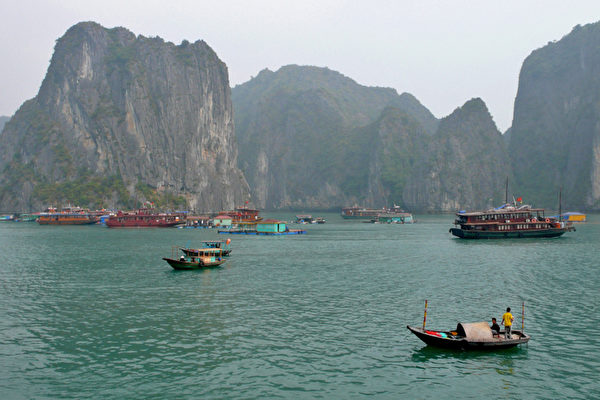Sam Aisbett, an Australian Michelin-starred chef, shared in a recent video interview with Bloomberg reporters that in July 2023, a week before opening his restaurant Akuna in Ho Chi Minh City, Vietnam, he felt panic. With menu prices set at 3.9 million Vietnamese dong (160 US dollars), which is at least 20 times higher than street food stalls across the road, he questioned how the restaurant could survive.
However, his risk-taking paid off as Akuna flourished. A year later, Aisbett’s skillful dishes made with Vietnamese ingredients earned the restaurant a Michelin star. Dishes like squid slices paired with local sea grapes, palm hearts, and squid dumplings; and sea urchin paired with scallops and marinated durian showcased his culinary prowess.
While Vietnam is known for its affordable and delicious noodles, grilled meat skewers, and banh mi sandwiches, Akuna is now gaining recognition among luxury food enthusiasts.
Last year, the Michelin Guide landed in Vietnam, awarding one star to four restaurants. This year, three more restaurants have been added to the list, including La Maison 1888 in Danang, indicating that Vietnam’s culinary scene is expanding beyond its major cities. Among the seven Michelin-starred restaurants, only one is a French restaurant with dishes closely tied to Vietnam’s colonial history. Three – Tam Vi, Anan Saigon, and Gia – are classified as Vietnamese restaurants, while Akuna is categorized as an “innovative restaurant,” showcasing the vibrant upscale dining scene in Vietnam.
This culinary development is largely attributed to Vietnam’s thriving tourism industry. The pace of luxury travel expansion surpasses other sectors, driving the demand for high-end dining. According to the World Travel & Tourism Council, tourism expenditures in Vietnam are expected to reach a record-breaking 31 billion US dollars this year, accounting for about 7% of Vietnam’s economy and supporting 1 in 9 jobs in this country of approximately 100 million people.
Vietnam, along with rising middle-income countries like India, plays a role in boosting the tourism industry. Since 2019, the number of visitors from India has doubled.
Food plays a crucial role in attracting global travelers. A survey conducted by McKinsey & Co this summer among 877 American and British travelers showed that food experiences rank as the second most popular activity among tourists, second only to sightseeing and art experiences.
At least one luxury travel agency has shifted its focus to Vietnamese cuisine. Abercrombie & Kent chose Vietnam as its first destination for a food-focused tour. Director Suzanne Teng stated in an email to Bloomberg that the increasing demand for food experiences in previous travels led them to make this decision.
She mentioned that the release of the Vietnam Michelin Guide last year created a “marketably attractive opportunity,” allowing visitors to combine street food experiences with dining at Michelin-starred restaurants like Anan Saigon and Gia. The unexpected demand prompted the company to plan to double the number of Vietnam food tours in 2025, reaching 12 tours.
Furthermore, due to low labor and rental costs, even expensive restaurants in Vietnam feel relatively cheaper compared to high-end restaurants in other parts of the world. A Michelin-starred restaurant in New York City or San Francisco, such as Le Pavillon and Nightbird, respectively, charge approximately twice the prices of Anan Saigon.
Chefs noted that while their customers were previously mainly locals, now international tourists make up half of their clientele.

